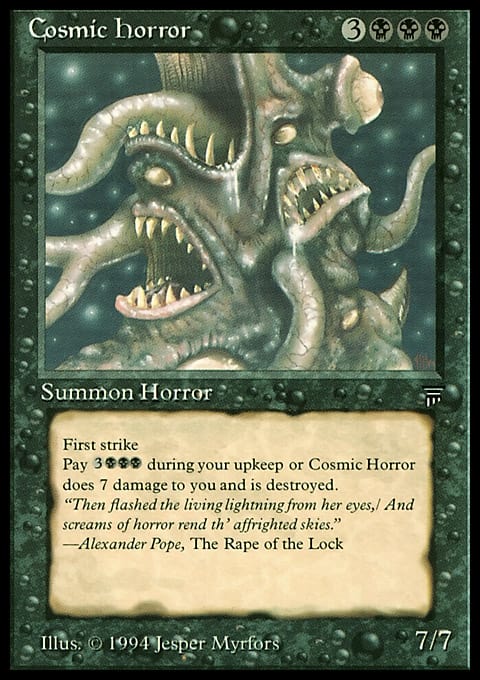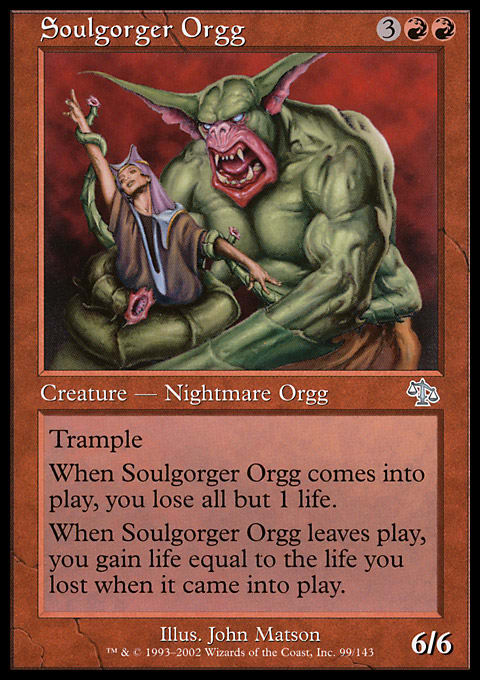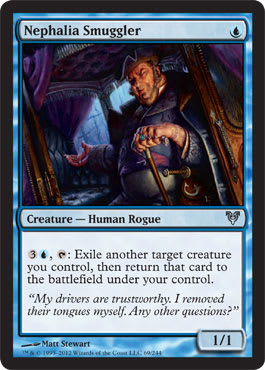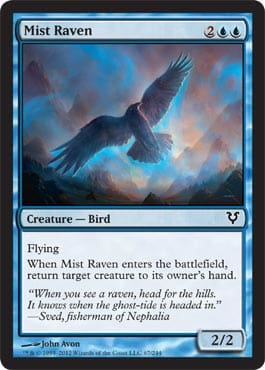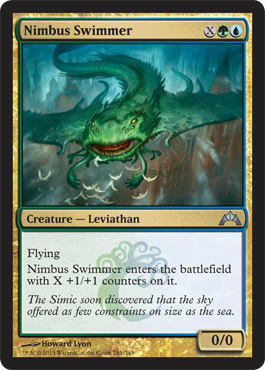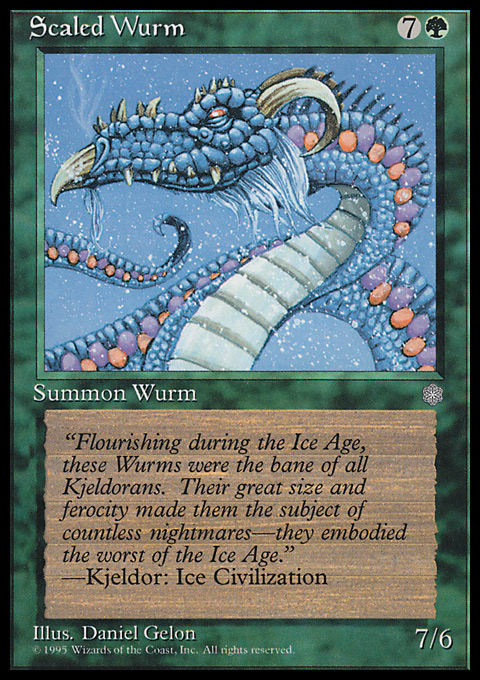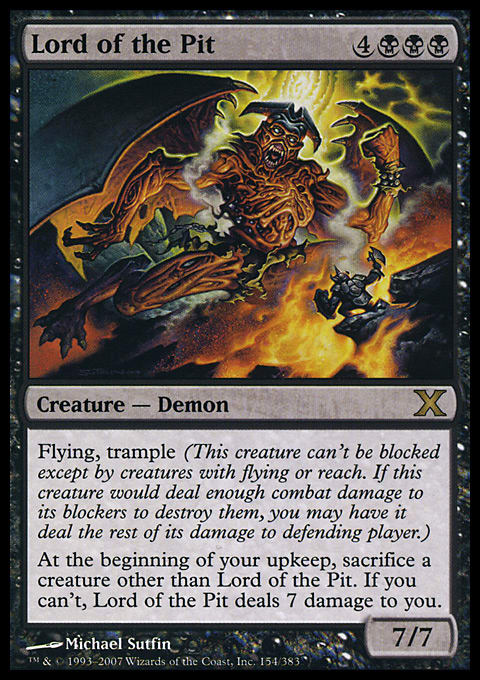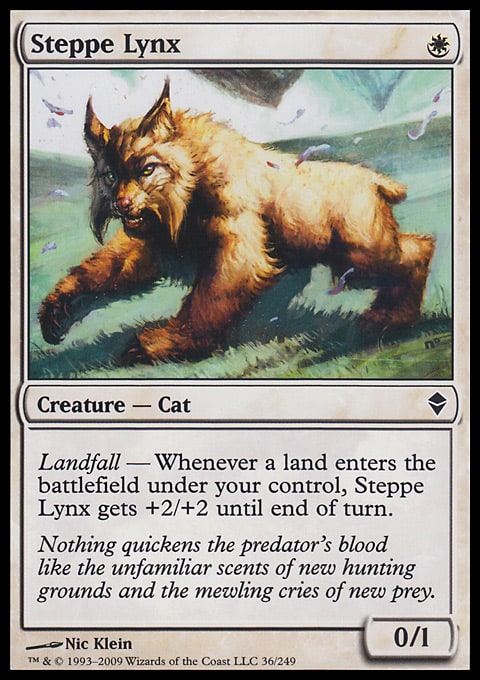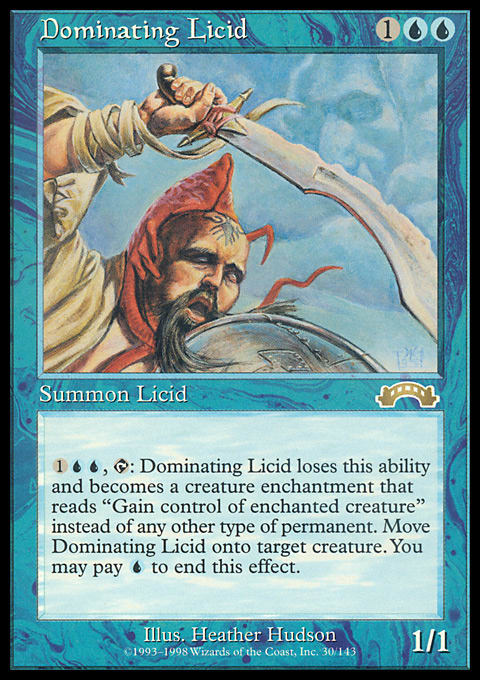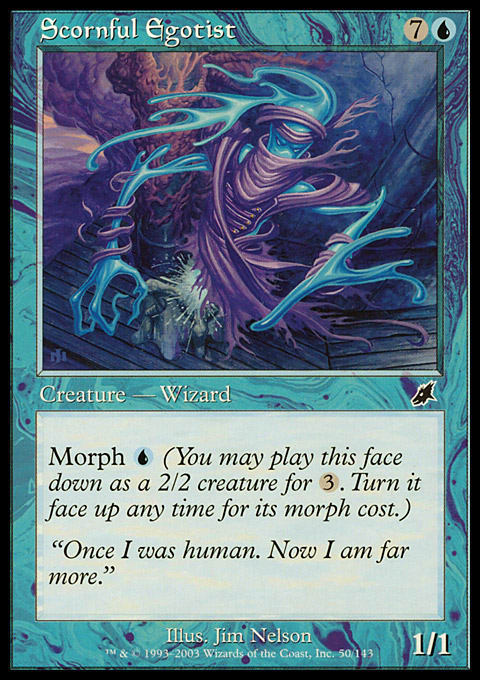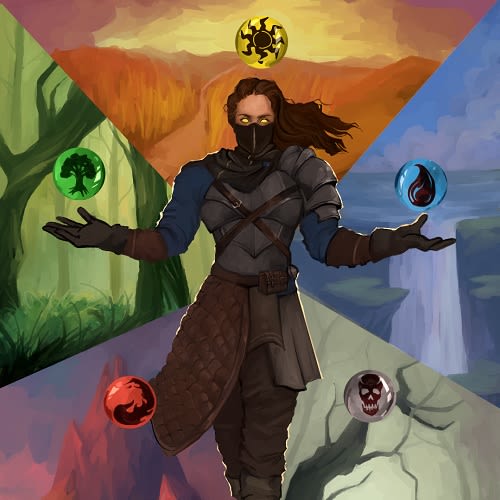I didn’t mean to stay, but a longtime acquaintance I’ve not seen in decades had me entangled in a conversation. Now we sit at the bar, apparently made out of blackened coffin boards. Cosmic Horror, brooding over a glass of torrid opaque liquid, has seen better days. He—She? . . . It? . . . They?—looks at me and says, “For
I take a sip of (presumably) beer, sigh heavily, and consider the fact that I used to be really impressed with the bulky monster in all its glorious tentacledness.
“You know,” I say, “Planeswalkers these days just don’t have respect for the creatures they summon. Summoning you—that meant something. We knew, then, that it was dangerous. Ah, the thrill . . . !”
He—She? . . . It? . . . They?—sobs softly, sliding a wet tentacle around my shoulders. “Ah, the old days of terribly bad creatures with severe drawbacks and grievously quick self-inflicted planeswalker death.”
“Yeah, the old days.”
Welcome to Momir Frenzy, a nostalgic game of Magic that takes only minutes to play and lets you relive all the fun that random bad creatures offer. If you know Momir Basic on Magic Online, the following will sound fairly familiar to you.
History Lesson
Mark Rosewater has pointed out on various occasions that Magic: The Gathering is many games in one.
@wortwelt "Magic isn't really one game but many games with a shared rules system. Standard, Modern, Draft, Commander - each it's own game."
— Mark Rosewater (@maro254) July 16, 2015
You can basically make a variety of particular games based on Magic. Today, I want to present (or rather remind you of) another spin on a popular Magic Online format: Momir Frenzy! It is a self-contained game of summoning random creatures that are either horrible, powerful, or just plain weird.
The basic idea is not new. Credit goes to Justin Hovdenes, who played against Mark Rosewater at Worlds 2008 with a lookup binder of possible cards, laminated blank cards, and Sharpies to make tokens. In 2012, Cube aficionado Matt “Kranny” Kranstuber brought to you the idea of a Momir Basic Cube, which is in many ways similar to what this is about. However, I was not aware of the fact that Matt had written about it until I had almost finished this piece. My take will sound very similar to what Matt did with his Momir Basic Cube. If the blatant nature and gameplay of my approach isn’t in your wheelhouse, I can only refer you to his excellent write-up.
Basics: What Is Momir?
Momir Basic is a Magic Online–only format since it uses Magic Online’s unique capability to generate random cards. In Momir Basic, every player starts with a sixty-card deck made up only of basic lands and the Momir Vig avatar. The avatar grants the player an additional 4 starting life and the following ability: “
Consequently, the games are quirky and hilarious. It’s like playing the lottery, but for creatures. You could make Baneslayer Angel for those 5 mana, but it could also be Soulgorger Orgg, and that Prodigal Sorcerer your opponent made earlier will turn into a deadly threat in the blink of an eye. To me, the best stories from Momir Basic are the bad-beat blowouts: how someone hit Phage the Untouchable off a 7-mana activation and instantly lost since she wasn’t cast from the hand, or how someone was killed by her own Force of Nature because she was unable to pay the upkeep, dying with the fourth Forest in her hand—or how someone hit a Leveler.
When going through my collection recently, I stumbled upon a slew of older rares I knew I’d never play, not even in Commander decks: cards like Gallowbraid, Eater of Days, or Marjhan (hands up—who knew the card without looking it up?). These cards are basically worthless, but in 1996, they were huge and awesome monsters, to be admired no matter what the drawbacks were. That’s when I remembered that Arcana from Worlds 2008, and I decided to make my own Momir game offline. So, how do you play?
The Rules of Random Mayhem
You need twelve piles of creature cards. Creatures with converted mana cost 1 go in the first pile, creatures with converted mana cost 2 go in the second, and so forth.
Each players start with a deck of sixty cards, containing twelve of each basic land. Then, proceed to play a normal game of Magic, except both players have the following ability:
![]() , Discard a card: Put a card at random from the appropriate pile onto the stack, where X is the converted mana cost determining the appropriate pile. You may play this ability during your turn whenever you could play a sorcery. You may activate this ability two times during your turn.
, Discard a card: Put a card at random from the appropriate pile onto the stack, where X is the converted mana cost determining the appropriate pile. You may play this ability during your turn whenever you could play a sorcery. You may activate this ability two times during your turn.
The cards from the piles are treated like cards you would play in a normal game of Magic. Each player “owns” the cards she is putting on the stack and battlefield. If a creature you own dies, it goes to your graveyard, and so on.
Rules Notes
Treat the Cards as Actual Cards
Instead of using printed sheets in a binder and dice to determine the creature generated by the ability, I use actual cards since I want to find something to do with them in the first place. When the creatures die, they go to the owner’s graveyard, and when they are returned to the hand, they return to the owner’s hand. I want this version of Momir to resemble paper Magic very closely to make it more accessible to players who don’t know Momir Online’s token mechanism. This also opens up a little more gameplay with effects that return permanents to their owners’ hands or Flicker creatures, such as Nephalia Smuggler.
Practicality Is Key
I have twelve piles with cards from converted mana cost 1 through 12. Piles in the more accessible mana costs have more cards. I didn’t intentionally balance colors or numbers; I just made sure that every pile has a good mixture and that there was enough variance. The piles are also sleeved with a variety of colored sleeves so I can tell them apart. I used roughly three hundred cards, which fit nicely into a standard Fat Pack box, so I can take it with me wherever I go. The bulk of the cards are in the mana cost 1 to 5 range, while the mana-cost-12 section has only four cards. Those costly ones just don’t come up that often.
Filling up Piles at Higher Mana Costs
At converted mana cost 8 or more, the air gets thin. Many of these monsters are unbeatable, particularly if you happen to have mostly newer cards. To remedy this, you can put a few X spells in the higher piles, such as Nimbus Swimmer. If a player hits it, assume that it is put onto the stack with the paid converted mana cost. If the Nimbus Swimmer is in the 9-mana pile, X will be 7. In fact, you are not even limited to creatures. I have Storm Herd in the 10-mana pile since it acts like a creature spell.
The Good, the Bad, the Ugly, and the Just Plain Weird
We all cast the best spells in the game when we Cube or play Commander. That’s nice and all, but there’s nothing like watching your opponent pay 8 mana to reveal Scornful Egotist or Scaled Wurm. In a game as random as Momir Frenzy, you can get away with including a potent mix of creatures, regularly resulting in self-inflicted Tarantinoesque bloodshed. The more severe the drawback, the better: Make those piles as high-risk, high-reward as possible. The random nature of the format cushions the sting of losing to your own freshly revealed Lord of the Pit. Besides some very potent cards, I also included some Unhinged cards and forgotten promos such as Windseeker Centaur. (If you want a more balanced experience, I highly recommend Matt’s article.)
Twice the Fun
Allow for two activations a turn. Due to the fact that the lower piles are pretty high-octane and offer a lot more variety than the 8-plus sections, it makes sense to incentivize splitting the available mana into two activations. This leads to faster games overall and adds one more meaningful decision so that players don’t just default to playing the next bigger dude.
Quick Magic
The Momir Vig avatar online gives you +4 starting life, but it is recommended to use the nostalgic alpha-edition starting life of 20. It’s one fewer thing to explain, and it also makes for shorter games. In testing the box, I found that it’s much more fun to be able to play a few short games than one drawn-out battle. The most fun was had when players could just activate the ability as often as possible, exploring the content of the box and creating wild interactions.
What’s in the Box?
The content of my Momir Frenzy box is aimed at quick and crazy games. Ideally, you can play a few games while waiting for that Cube midrange mirror grind-fest to finish or during a lunch break. The emphasis is on weird, unique, and frankly horrible cards to give every activation a Russian roulette feel. Here are some comments on particular card choices in the different mana cost piles.
Don’t bother replicating my list card for card though. My box is literally made of neglected or currently unused cards that I had around (and all those thirty-nine-count sleeve piles that were carelessly thrown into a box). There are a ton of cool cards for this kind of box that I didn’t think of for sure.
Converted Mana Cost 1 and 2
- CMC 1 (33)
- 1 Mogg Fanatic
- 1 Kird Ape
- 1 Steppe Lynx
- 1 Goblin Swine-Rider
- 1 Children of Korlis
- 1 Kederekt Parasite
- 1 Signal Pest
- 1 Mountain Goat
- 1 Orcish Lumberjack
- 1 Scryb Sprites
- 1 Enclave Cryptologist
- 1 Seedcradle Witch
- 1 Taunting Elf
- 1 Twinblade Slasher
- 1 Goblin Guide
- 1 Guul Draz Assassin
- 1 Benevolent Bodyguard
- 1 Hedron Crab
- 1 Fume Spitter
- 1 Nephalia Smuggler
- 1 Elvish Pioneer
- 1 Isamaru, Hound of Konda
- 1 Magus of the Vineyard
- 1 Spurnmage Advocate
- 1 Wingcrafter
- 1 Veteran Explorer
- 1 Rogue Elephant
- 1 Loyal Sentry
- 1 Wild Nacatl
- 1 Carnophage
- 1 Keeper of Kookus
- 1 Wretched Anurid
- 1 Goblin Legionnaire
- CMC 2 (36)
- 1 Harvest Wurm
- 1 Gloom Surgeon
- 1 Riptide Mangler
- 1 Crimson Mage
- 1 Mogg Maniac
- 1 Heart Warden
- 1 Ludevic's Test Subject
- 1 Lightning Mauler
- 1 Sindbad
- 1 Horned Kavu
- 1 Niblis of the Urn
- 1 Plated Geopede
- 1 Kami of the Crescent Moon
- 1 Leeching Licid
- 1 Storm Crow
- 1 Wu Light Cavalry
- 1 Skinshifter
- 1 Lotus Cobra
- 1 Black Cat
- 1 Bazaar Trader
- 1 Renegade Doppelganger
- 1 Stingscourger
- 1 Standard Bearer
- 1 Nin, the Pain Artist
- 1 Soulbright Flamekin
- 1 Phantasmal Image
- 1 Karoo Meerkat
- 1 Loxodon Peacekeeper
- 1 Myr Superion
- 1 Watchwolf
- 1 Spellskite
- 1 Ashling the Pilgrim
- 1 Strangleroot Geist
- 1 Inquisitor Exarch
- 1 Jotun Grunt
- 1 Kargan Dragonlord
Goblin Guide is the definition of a double-edged sword in this format. You have the best 1-mana attacker red has ever seen, but you will inevitably flood your opponent’s hand with lands.
Since the rules of Momir Frenzy treat the creatures that you make like cards, Nephalia Smuggler lets you reuse any enters-the-battlefield triggers that you happen to have. It also gives you something to do once you run out of cards.
Landfall is obviously great in this format. Cards like Hedron Crab and Steppe Lynx add another layer of meaningful decisions: Should I discard this land to activate the ability once more or just play it? Since this version of Momir places so much weight on pure chance, decisions like these are necessary to ameliorate the madness and make games meaningful.
Taunting Elf and Wingcrafter help to break up board stalls, contributing to the fast nature we are going for here.
Veteran Explorer and Magus of the Vineyard are ways to quickly supercharge games.
Bazaar Trader is a great card to include. Quite a few cards you can hit in the higher casting costs may not be beneficial for you, and I’m sure your opponent will be very glad when you gift him your newly acquired Evil Eye of Urborg.
Myr Superion is obviously absurd thanks to the Momir mechanic.
Converted Mana Cost 3 and 4
- CMC 3 (56)
- 1 Giant Badger
- 1 Intrepid Hero
- 1 Indentured Djinn
- 1 Peacekeeper
- 1 Organ Grinder
- 1 Crafty Pathmage
- 1 Big Game Hunter
- 1 Banisher Priest
- 1 Silverblade Paladin
- 1 Wild Mammoth
- 1 Drinker of Sorrow
- 1 Gliding Licid
- 1 Tilling Treefolk
- 1 Fire Imp
- 1 Horrible Hordes
- 1 Flickerwisp
- 1 Darksteel Myr
- 1 Killer Bees
- 1 Ambassador Laquatus
- 1 Mogg Assassin
- 1 Phyrexian Rager
- 1 Cosmic Larva
- 1 Hunted Phantasm
- 1 Cartographer
- 1 Dominating Licid
- 1 Mudbutton Torchrunner
- 1 Spawnwrithe
- 1 Necroplasm
- 1 Orcish Paratroopers
- 1 Orcish Artillery
- 1 Prodigal Sorcerer
- 1 Doran, the Siege Tower
- 1 Fallow Wurm
- 1 Awakener Druid
- 1 Pulsemage Advocate
- 1 Spawnbroker
- 1 Fleshbag Marauder
- 1 Palladium Myr
- 1 Demonic Taskmaster
- 1 Chieftain en-Dal
- 1 Phyrexian Negator
- 1 Spined Fluke
- 1 Gideon's Avenger
- 1 Fiend Hunter
- 1 Tempting Licid
- 1 Arms Dealer
- 1 Rishadan Cutpurse
- 1 Spike Cannibal
- 1 Nantuko Husk
- 1 Windseeker Centaur
- 1 Tar Pit Warrior
- 1 Paragon of the Amesha
- 1 Vampire Nighthawk
- 1 Thalakos Dreamsower
- 1 Lyev Skyknight
- 1 Dross Harvester
- CMC 4 (52)
- 1 Monkey Monkey Monkey
- 1 Hammerheim Deadeye
- 1 Calciderm
- 1 Bounty Hunter
- 1 Goblin Psychopath
- 1 Lightning Angel
- 1 Diaochan, Artful Beauty
- 1 Rafiq of the Many
- 1 Lumbering Satyr
- 1 Krosan Vorine
- 1 Squallmonger
- 1 Carnage Gladiator
- 1 Eater of Days
- 1 Blastoderm
- 1 Ruhan of the Fomori
- 1 Horobi, Death's Wail
- 1 Lumberknot
- 1 Valor
- 1 Phyrexian Vatmother
- 1 Hunted Wumpus
- 1 Faceless Butcher
- 1 Galepowder Mage
- 1 Cinder Giant
- 1 Dungeon Geists
- 1 Clone
- 1 Yukora, the Prisoner
- 1 Druid's Familiar
- 1 Paper Tiger
- 1 Scissors Lizard
- 1 Rock Lobster
- 1 Wonder
- 1 Fickle Efreet
- 1 Phantasmal Dragon
- 1 Wormfang Crab
- 1 Krosan Beast
- 1 Graveborn Muse
- 1 Marble Titan
- 1 Scourge of Numai
- 1 Mongrel Pack
- 1 Dreamborn Muse
- 1 Flowering Lumberknot
- 1 Coalition Honor Guard
- 1 Rainbow Efreet
- 1 Howling Banshee
- 1 Cinder Elemental
- 1 Unstable Shapeshifter
- 1 Voice of All
- 1 Lava Hounds
- 1 Imperiosaur
- 1 Murderous Redcap
- 1 Bloodfire Kavu
- 1 Hero of Oxid Ridge
Doran, the Siege Tower can turn around games completely, and it’s not at all clear who actually will profit. It’s a perfect fit.
Aside from having awesome flavor text, Wild Mammoth creates an interesting subgame of who is willing to commit as many creatures as possible.
Dominating Licid was thrown in because it was rotting in my binder for ages. However, the Licids are a bizarre thing of Magic’s past, and some have great effects. If you worry about complexity, though, I’d leave these out.
Make sure to include cards like Intrepid Hero and Fiend Hunter. The amount of removal in this version of Momir should be fairly high. When trying to end games quickly, blockers have to go.
Indentured Djinn is another poster child for the intended gut-punch feeling.
Orcish Paratroopers! The games are already very wonky, and a few additions from Un-sets fit rather well in here. If dexterity cards aren’t your thing, just leave ’em out.
Laboratory Maniac is the only card I ordered for this. Alternate win conditions on creatures are rare (ha!), and there is a Leveler in the 5-mana pile, after all. The card also works with several milling options, such as Ambassador Laquatus.
Wrath effects on creatures are also rare. At least False Prophet gives you some control over when it’ll happen.
Lumbering Satyr has proven to be one of the swingiest cards in the format, and it ended games in such a surprising fashion that you should not run it if you want a little more control about what’s happening.
Converted Mana Cost 5 and 6
- CMC 5 (40)
- 1 Mulldrifter
- 1 Evil Eye of Orms-by-Gore
- 1 Vengeful Pharaoh
- 1 Precursor Golem
- 1 Primeval Force
- 1 Cockatrice
- 1 Greater Harvester
- 1 Golem Artisan
- 1 Archon of Justice
- 1 Sengir Vampire
- 1 Kodama of the North Tree
- 1 Stonebrow, Krosan Hero
- 1 Menacing Ogre
- 1 Morinfen
- 1 Slash Panther
- 1 Jasmine Boreal
- 1 Soratami Seer
- 1 Kookus
- 1 Urabrask the Hidden
- 1 Shriekmaw
- 1 Evil Eye of Urborg
- 1 Mosstodon
- 1 Stone Catapult
- 1 Kjeldoran Royal Guard
- 1 Emrakul's Hatcher
- 1 Crested Craghorn
- 1 Skullmulcher
- 1 Leveler
- 1 Dread Slag
- 1 Soulgorger Orgg
- 1 Woodborn Behemoth
- 1 Ixidron
- 1 Stingerfling Spider
- 1 Heartless Hidetsugu
- 1 Winding Wurm
- 1 Gallowbraid
- 1 Karplusan Yeti
- 1 Krovikan Vampire
- 1 Kiki-Jiki, Mirror Breaker
- 1 Prowling Pangolin
- CMC 6 (25)
- 1 Dark Hatchling
- 1 Firemaw Kavu
- 1 Cosmic Horror
- 1 Force of Nature
- 1 Witch Engine
- 1 Capricious Efreet
- 1 Skyward Eye Prophets
- 1 Stangg
- 1 Dakmor Lancer
- 1 Rampaging Baloths
- 1 Commander Greven il-Vec
- 1 Magus of the Mirror
- 1 Rorix Bladewing
- 1 Flameblast Dragon
- 1 Keiga, the Tide Star
- 1 Meglonoth
- 1 Triskelion
- 1 Karona, False God
- 1 Craw Wurm
- 1 Phyrexian Gargantua
- 1 Giant Shark
- 1 Symbiotic Beast
- 1 Duplicant
- 1 Elvish House Party
- 1 Baloth Woodcrasher
I remember seeing Leveler spoiled and being dumbstruck about the apparent unplayability. Most of the time, this is game over, but there is a Laboratory Maniac in the 3-mana pile . . .
Ixidron is very board-dependent. I have seen it backfire a lot, but once in a while, it saves the day by turning down a Dross Harvester that was about to kill you.
Witch Engine . . . What a strange rare. Swampwalk is very powerful on its own, but the jump from 6 to 10 or potentially 11 mana is so alluring!
Converted Mana Cost 7 and Up
- CMC 7 and Up (81)
- 7 and Up]
- 1 Phage the Untouchable
- 1 Tolarian Serpent
- 1 Skyshroud Behemoth
- 1 Maul Splicer
- 1 Vizzerdrix
- 1 Drogskol Reaver
- 1 Diabolic Machine
- 1 Ebony Rhino
- 1 Darksteel Gargoyle
- 1 Chaos Lord
- 1 Lord of the Pit
- 1 Molimo, Maro-Sorcerer
- 1 Havoc Demon
- 1 Wurmskin Forger
- 1 Butcher Orgg
- 1 Phyrexian Ingester
- 1 Tyrant of Discord
- 1 Fleshpulper Giant
- 1 Marjhan
- 1 Benthic Behemoth
- 1 Verdant Force
- 1 Hellkite Overlord
- 1 Tidal Kraken
- 1 Crash of Rhinos
- 1 Liege of the Pit
- 1 Chorus of the Conclave
- 1 Ulamog's Crusher
- 1 Celestial Force
- 1 Scaled Wurm
- 1 Avatar of Slaughter
- 1 Stormtide Leviathan
- 1 Bogardan Hellkite
- 1 Avatar of Will
- 1 Deep Spawn
- 1 Hoverguard Sweepers
- 1 Scornful Egotist
- 1 Magmatic Force
- 1 Sisters of Stone Death
- 1 Living Inferno
- 1 Walker of the Grove
- 1 Qumulox
- 1 Bringer of the Red Dawn
- 1 Bringer of the White Dawn
- 1 Furnace Dragon
- 1 Colossus of Sardia
- 1 Suncrusher
- 1 Krosan Colossus
- 1 Nullstone Gargoyle
- 1 Hand of Emrakul
- 1 Grozoth
- 1 Chromescale Drake
- 1 Storm Herd
- 1 Broodstar
- 1 Spawnsire of Ulamog
- 1 Chimeric Mass
- 1 Deep-Sea Kraken
- 1 Stratadon
- 1 Progenitus
- 1 Nimbus Swimmer
- 1 Pathrazer of Ulamog
- 1 Mycosynth Golem
- 1 Gelatinous Genesis
- 1 Darksteel Colossus
- 1 Blightsteel Colossus
- 1 It That Betrays
- 1 Maga, Traitor to Mortals
- 1 Balduvian Hydra
- 7 and Up]
Drogskol Reaver is a testament to how powerful the creatures of today are, and yet, it’s not powerful enough to be viable in competitive play. Just compare this to Ebony Rhino—yeah. That’s 7 mana well spent. At least it’s not Phage the Untouchable. This is a must-include. This is card-forged misery and essentially why I constructed my list the way I did.
Avatar of Slaughter is tailor-made for the format since it forces you to do battle in a very messy way.
Scornful Egotist is the real stinker in the 8-mana pile. Remember that the point of stinkers is mainly to make players feel the risk of paying 8 mana. The bad cards need to be in there so players don’t just default to always activate with maximum mana. That said, the 8-mana pile is very high-octane anyway.
Oh, Colossus of Sardia—another member of the I-was-so-impressed-by-this-card-when-I-was-a-kid club.
As for Suncrusher, since you didn’t actually cast the card, it enters the battlefield with no +1/+1 counters. Sorry!
If cast for 11 mana, Gelatinous Genesis makes five 5/5 Oozes. Not bad, huh?
Maga, Traitor to Mortals in this spot means X is 9. That’s quite some damage.
I haven’t bothered making a 13-, 14-, or 15-mana-cost pile. Games have not been going that far, and the Fat Pack box has only so much space.
Creatures with drawbacks are the neglected stepchildren of today’s all-upside battlecruiser Magic, sitting idly in binders year after year, in pristine, gem-mint condition, never to be put onto the battlefield. It’s time to change that! Get those poor and misunderstood cards a nice home—make two decks of basic lands, and smash face with Deep Spawn!
Martin Zimmermann
@wortwelt on Twitter















